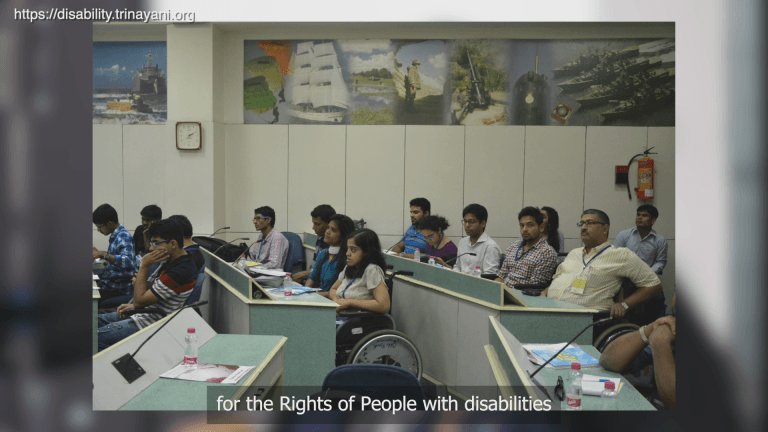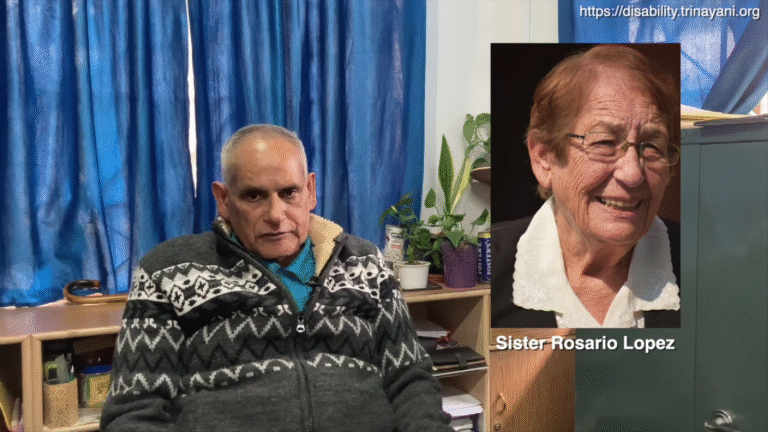Jo Foundation – Kohima
Located in Nagaland, Jo Foundation is redefining education through inclusion! Narrated by Daniel Thong Seb, Advisor to the school, and moments shared by the children themselves, this film captures the essence of what true inclusion looks like in practice. From curriculum adaptations and individualized education plans (IEPs) to building empathy and friendship across differences, the school creates a space where everyone belongs.
At Jo Foundation, an Inclusive School in Kohima, kids are growing up together, learning together, and unlearning the idea that difference means distance.
Narrated by Daniel Thong Seb, this film takes you inside a school where everyone is equal. This is a story of steady progress and bold belief in what’s possible. Let’s take a closer look!
*
Our school is an inclusive school as you have seen.
We have around 300 plus hundred plus children and 45 staff. So out which we have therapist, um occupational therapist, we have a special educator with post- graduate degree even occupational therapist PG.
So basically, what we do here is that we have a therapy center which compliments the inclusive school.
So we have around 85 affected children. They have a under certain category ranging from physical to intellectual and even to the extent of uh specific learning disabilities.
Now we follow curriculum adaptation also, in one of the classrooms which we have visited which you personally took interview but the curriculum adaptation for the particular child was, we’re doing it for three steps down and that is why the child have um issue understating what is going on the class.
*
English, English 1 English 2 , English 1 English 2 okay.
SS and and Computer and GK and, Alright.
*
As me with my regular friends; I have equal feelings to my special friends. That’s what I mean for everyone. Like I don’t have any uh different kind of feelings for them, everything is equal for me.
*
We focus a lot on the findings or assessments made by the clinical psychologists. The clinical psychologists gives us exactly what is the mental age of the child and that is where it helps our special educator. It helps the teacher and the parents to plan IEP’s for the child and then eventually for the teachers uh to come up, to pick up which curriculum adaptation needs to be done.
And for other children we want them, all the children, we want them to sit in their own peer groups so that they pick up certain social skills.
It is very important to keep all the children together because the special children, they are not going to live in isolation, they are going to live in a society.
So. the regular children also needs to be sensitized. They need to develop empathy for the special children. And uh that is how a society will be bridged. That is how awareness will be created among themselves and the families and eventually expect our society to be inclusive in certain ways.
*
How I wonder what you are. Up above the world so high. Like a diamond in the sky. Twinkle twinkle little …
Good morning, good morning , Hi Joe, say hi, hi Joe
*
It was in 2009 we formed a society and 10 we started. So when we have open up this inclusive school there were just eight of them, two of them were effected and eventually uh it grew up to three hundred plus students and uh we are seeing that we are growing in from strength to strength. We are getting more enrollment and we are also able to create more impact.
We see that uh there is an increase in the strength of the school but uh we want also to make sure that every school is inclusive and they open the doors and as such we give opportunities.
Jo foundation is a small school here but we give opportunities for teachers to come and observe, teachers to come and take training and even the State college of teacher education they send their B.Ed trainees . They come and they get trained and they’ll, they observe and then they are able to do something.
So that is what we are offering, so that schools around Kohima, in and around, many inclusive schools will come out and uh special children will be taken out will be you know, enrolled in the schools.
I hope eventually we’ll be able to do it and uh because right now the ratio of special children are increasing more and more and the regular children are are are not increasing as such and our capacity, we small, a small area only, so there is a limit and that is why we are requesting the public also, we are requesting school proprietors, we are requesting no um the educators to come and be a part of inclusion and with their cooperation I ‘m sure that every school in in Nagaland or may be starting with Kohima will be an inclusive school.
*
Though our friends here may be differently abled, to see them as uh uh see them as one of us, don’t like count them out in anything, just see them as family.
Because I see many people in public like, they give stares to kids with disabilities. In our school we’ve grown up we’ve grown up with them and it’s become normal to see them every day, it’s good to help them.
(music)
adaptive curriculum, B.Ed training, child development, community inclusion, Daniel Thong Seb, differently abled, disability awareness, education for all, educational equity, inclusive classroom, inclusive education, inclusive practices, inclusive society, Indian education, intellectual disabilities, Jo Foundation, Kohima school, learning disabilities, mental age assessment, Nagaland education, occupational therapy, peer learning, school for all, school inclusion model, social inclusion, special education India, special educator, student empathy, therapy center
Dive Deeper: More on Disability
Learn about the most common inquiries surrounding disability, education, legislation, accessibility, employment and other sectors related to disability.


Playlist
Access & Inclusion


Playlist
Adaptive Sports


Playlist
Alternative Communication Methods


Playlist
Autism & Neurodiversity


Playlist
Blindness & Adaptations


Playlist






